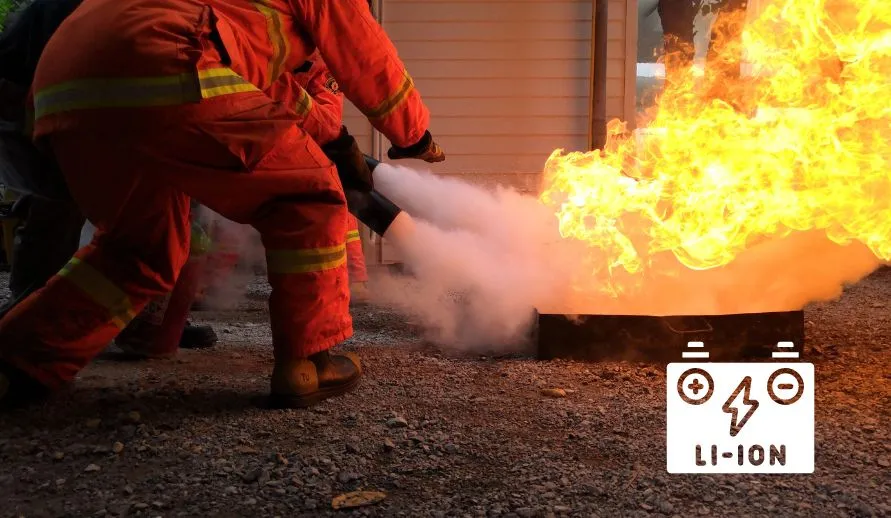Extinguishing burning lithium-ion batteries
Caution! Burning lithium-ion batteries can not only emit explosive flames, but also toxic gases. Before attempting to extinguish a burning battery, you should therefore first consider your own safety and that of other people. If a battery inflates or produces smoke while charging, disconnect it from the power supply immediately.
Lithium-ion batteries can ‘thermally run away’ due to damage, incorrect charging or overheating. This releases oxygen, which can burn together with the electrolytes and escape from the battery housing under high pressure. Non-rechargeable lithium batteries also contain elemental lithium, which even reacts violently with water. In addition, both the battery and its individual cells are packed in sealed housings, making them difficult or impossible for extinguishing agents to reach. So how are lithium-ion batteries extinguished?
The answer is frighteningly simple: in principle, burning cells of lithium-ion batteries cannot be extinguished at all, as the heat generated continuously produces oxygen for combustion. Consequently, the fire originating from a battery cell cannot be smothered with water, extinguishing foam or a fire blanket.
The aim of firefighting is therefore not to extinguish the already burning cells of the lithium-ion batteries, but to prevent the flames from spreading to other cells or other objects. This is achieved firstly by cooling with water and secondly by physical separation. If neither the burning battery nor flammable materials nearby can be removed, the fire brigade sometimes uses fire blankets to shield other objects from the flames and heat. The only option for the cells that have already reached thermal runaway is to let them burn out.
Caution is also required after the flames have gone out. Thermal runaway can also occur spontaneously in damaged lithium-ion battery cells - and after a battery fire, all cells can be considered damaged. Therefore, even a battery that is considered extinguished can catch fire again. It is therefore advisable to store burnt-out batteries (or entire devices) in water (e.g. in a bucket) until they can be disposed of properly.
Large quantities of extinguishing water are required to ‘extinguish’ a burning lithium-ion battery, which can itself lead to damage. It is therefore better to prevent the flames from spreading by ensuring that the battery is separated from other flammable materials during storage or charging. If large distances are not an option, users can also use a fireproof battery container such as the RETRON BOX.
Good to know: RETRON and REMONDIS also help businesses and local authorities to dispose of lithium-ion batteries safely. As our range of containers even has a UN certificate for the transport of critically defective lithium-ion batteries, we can also take care of the disposal of batteries that have already burned. Contact us if you need a partner for the safe storage or disposal of lithium-ion batteries.



